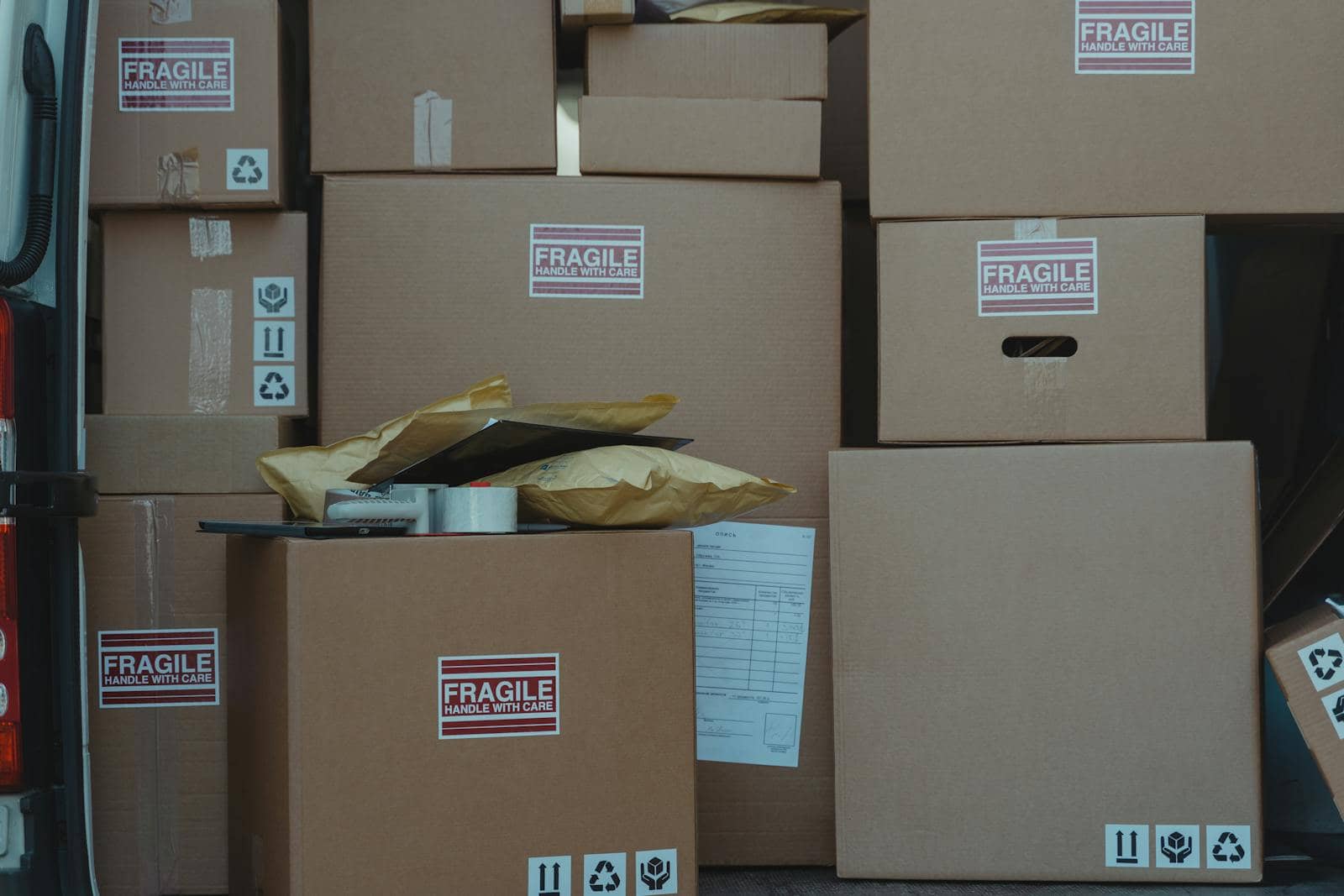Dropshipping in South Africa: The Real Truth Behind the Hype (2025 Guide)

Heard the buzz about dropshipping? Maybe you’ve seen ads promising easy money, a laptop lifestyle, and the freedom to be your own boss – all from the comfort of your home in Cape Town, Johannesburg, or Durban. Dropshipping can sound like a dream business model, especially in a growing e-commerce market like South Africa.
But hold on. Before you dive headfirst into choosing suppliers and building your Shopify store, let’s hit pause. Like many online ventures, there’s often a significant gap between the hype you see online and the reality on the ground.
So, what’s the real story with dropshipping in South Africa? Is it a golden ticket to online riches, or a challenging path riddled with unique hurdles?
This comprehensive guide dives deep into the world of South African dropshipping. We’ll cut through the noise to give you a clear, balanced picture, exploring:
- Why dropshipping is so appealing (The Hype)
- The specific opportunities and major challenges in the South African context (The Reality)
- Debunking common myths
- Actionable steps for approaching dropshipping realistically in SA
- The ultimate verdict: Is it still worth pursuing?
This guide is for anyone in South Africa considering dropshipping – whether you’re a complete beginner curious about the model or someone who’s already started and hitting unexpected roadblocks. Our goal is to equip you with honest, practical information to make an informed decision.
Let’s get started.
Why Dropshipping Sounds Like a Dream (The Hype)

It’s easy to see why dropshipping captures the imagination. The core concept is undeniably attractive:
- Low Startup Costs: Unlike traditional retail, you don’t need to invest heavily in inventory upfront. You only purchase a product after a customer buys it from your store. This significantly lowers the financial barrier to entry.
- No Inventory Management: Forget warehousing, packing, and shipping. Your supplier handles all of that. This frees up your time and capital.
- Wide Product Selection: You can theoretically offer a vast range of products from various suppliers without stocking any of them.
- Location Independence: As long as you have an internet connection, you can run your business from almost anywhere.
- Scalability: As your business grows, you don’t face the same logistical nightmares as a traditional retailer. Adding new products or handling more orders mainly involves coordinating with your suppliers.
These benefits are real, in theory. But applying this model successfully in South Africa requires navigating a specific set of local realities.
The Reality Check: Dropshipping Challenges Specific to South Africa
This is where the hype meets the hard truth. While South Africa’s e-commerce market is growing, dropshippers face several significant hurdles:
1. Shipping & Logistics: The Biggest Hurdle
- Long Delivery Times: If using international suppliers (common in dropshipping, e.g., from China via AliExpress), shipping to South Africa can take weeks, sometimes months. South African customers are increasingly expecting faster delivery, making long waits a major conversion killer and source of complaints.
- High Shipping Costs: International shipping can be expensive, eating significantly into your profit margins or making your product prices uncompetitive. Free or cheap shipping offers from international suppliers often translate to the slowest, least reliable methods.
- Customs Duties & VAT: This is CRITICAL. Imported goods are subject to South African customs duties and VAT.
- Who pays? Often, the customer is surprised with these fees upon delivery by the courier. This creates a terrible customer experience and can lead to refused deliveries and chargebacks.
- Calculating Costs: Accurately predicting these costs is difficult, making transparent pricing challenging. You need to understand SARS regulations regarding imports.
- Local Courier Reliability: Even once goods land in SA, the reliability and cost of local courier services for the “last mile” delivery can vary significantly depending on the destination (major city vs. rural area). The South African Post Office (SAPO) has faced historical reliability issues.
- Returns Logistics: Managing returns, especially back to international suppliers, is complex, costly, and time-consuming. Offering easy returns (crucial for customer trust) becomes a major logistical and financial challenge.
2. Supplier Reliability & Quality Control
- Finding Reliable Suppliers: Identifying international suppliers who consistently provide quality products, package them well, and ship promptly specifically to South Africa requires significant vetting.
- Finding Local Dropshipping Suppliers: While ideal for faster shipping, finding South African manufacturers or distributors willing to dropship individual orders can be difficult. Their systems might not be set up for it, or their product range might be limited. This is a key differentiator – success often hinges on finding reliable local partners if possible.
- Quality Control: You rarely see the product yourself. Relying on a distant supplier means you risk customers receiving substandard, damaged, or incorrect items, damaging your brand’s reputation.
3. Payment Gateways & Trust
- Limited Local Options: While improving, the range of trusted, easy-to-integrate payment gateways supporting South African businesses might feel more limited or have higher fees compared to international markets. Popular options include PayFast, Yoco, PayGate, Ozow, alongside international players like PayPal (less common for direct checkout) and Stripe (availability/features can vary).
- Customer Trust: South African consumers can be wary of unfamiliar online stores, especially regarding payments and data security. Building trust is paramount.
4. Competition & Market Saturation
- Global Competition: You’re not just competing with local businesses but also with global giants (like Shein, Amazon) and countless other dropshippers selling similar products, often sourced from the same suppliers.
- Price Sensitivity: The South African market can be price-sensitive. Competing solely on price is tough, especially when factoring in realistic shipping and import costs.
5. Currency Fluctuations
- Rand Volatility: Buying from international suppliers (usually in USD or EUR) while selling in ZAR exposes your profit margins to currency fluctuations. A weakening Rand can quickly erode your profits if not managed carefully.
Debunking Common Dropshipping Myths in the SA Context
Let’s quickly bust some myths:

- Myth 1: Dropshipping is easy passive income.
- Reality: It requires active work: finding winning products, vetting suppliers, building and marketing your store, handling customer service inquiries (especially about shipping delays!), managing finances, and navigating logistical issues. It’s a real business.
- Myth 2: You need absolutely zero money to start.
- Reality: While you don’t buy inventory upfront, you do need capital for: Website/platform fees, domain name, marketing costs, test orders, potential business registration, and covering refunds before supplier reimbursement.
- Myth 3: Anyone can get rich quickly.
- Reality: Success requires business acumen, marketing skills, persistence, excellent customer service, and understanding the specific challenges in South Africa. Profit margins can be thin. Most dropshippers fail due to unrealistic expectations.
How to Approach Dropshipping Realistically in South Africa: Actionable Steps
If, after understanding the challenges, you still believe dropshipping is right for you, here’s how to approach it with a greater chance of success:
- Niche Down & Research Thoroughly:
- Don’t sell everything. Choose a specific niche you understand.
- Crucially: Research demand within South Africa. Are people searching? Who are competitors? Can you offer unique value?
- Prioritize Supplier Vetting (Crucial!):
- Look for Local Suppliers First: Explore South African manufacturers/distributors who might dropship. Platforms like Shopstar sometimes list options.
- If Using International Suppliers: Be diligent. Check reviews, communicate, understand their exact shipping process/costs to South Africa, and always place test orders.
- Solve the Shipping & Customs Puzzle:
- Be Transparent: Clearly state realistic shipping times.
- Factor in ALL Costs: Price products including product cost, shipping, marketing, fees, AND potential customs/VAT. Warn customers clearly about potential import fees or use DDP shipping if feasible (often costly). Research SARS guidelines diligently.
- Explore Local Fulfillment: Consider a hybrid model: stock top-sellers locally for faster shipping.
- Build a Trustworthy Brand:
- Professional Website: Invest in a clean store (Shopify, WooCommerce).
- Clear Contact Information: Make it easy for customers to reach you.
- Detailed Policies: Have clear Shipping, Returns, Privacy Policies compliant with SA laws (like POPIA).
- Social Proof: Use genuine customer reviews.
- Master Marketing & Customer Service:
- Targeted Marketing: Focus on SEO, content, local influencers, or targeted social media for SA.
- Exceptional Customer Service: Be proactive, responsive, and empathetic, especially about delays.
- Understand the Legal & Financials:
- Business Registration: Register appropriately (Sole Proprietor, Pty Ltd).
- Taxes: Understand income tax and VAT obligations with SARS. Consult an accountant.
- Payment Gateways: Choose reliable SA-trusted options (PayFast, Yoco, etc.).
The Verdict: Is Dropshipping Worth It in South Africa in 2025?
Dropshipping in South Africa is not a get-rich-quick scheme. The hype often glosses over significant logistical and cost challenges specific to the region.
However, it’s not impossible either. It can be a viable business model IF:
- You treat it as a serious business requiring significant time, effort, and strategy.
- You meticulously research and vet reliable suppliers (prioritizing local).
- You find realistic solutions for shipping, customs, and pricing.
- You focus on building a trustworthy brand and excellent customer service.
- You choose the right niche and understand the South African market.
- You have realistic profit expectations and manage finances carefully.
Think of it less as “easy dropshipping” and more as “lean retail startup with complex international logistics.” Core business principles are paramount.
Alternatives to Consider:
- Traditional E-commerce: Buy wholesale, manage stock locally for control.
- Print-on-Demand: For custom products, often with better global distribution.
- Affiliate Marketing: Promote others’ products for commission, no sales/shipping handling.
Conclusion: Navigate with Eyes Wide Open
Dropshipping holds undeniable appeal, but success in South Africa demands realism and a strategy tailored to local conditions. Don’t be swayed solely by the hype. Understand the challenges, particularly shipping and customs, do your homework, and be prepared for hard work.
If you can navigate these hurdles, build trust, and offer real value, you might carve out success in South African e-commerce. But go into it informed, prepared, and ready for the grind, not just the dream.
How Much Does it Really Cost to Start an Online Business in South Africa?